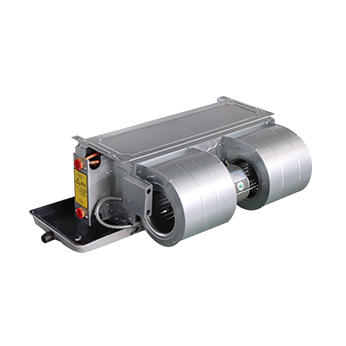Horizontal Concealed Fan Coil Unit
The main control parameters for horizontal concealed fan coil units are rated air volume, outlet static pressure, input power, rated cooling capacity, rated heating capacity, noise, water resistance, etc.
Key control parameters for selecting concealed horizontal fan coil units include rated air volume, outlet static pressure, power input, rated cooling capacity, rated heating capacity, noise level, and water resistance. For fan coil units in two-pipe water supply systems (suitable for air conditioning systems that switch between heating and cooling only seasonally or by air conditioning zone), only one set of coils is required, providing both winter and summer heating and cooling. For fan coil units in four-pipe water supply systems (suitable for air conditioning systems with frequent heating/cooling switching), a combined heating and cooling coil unit should be used.
Key Selection Points
1. Key control parameters for unit selection include rated air volume, outlet static pressure, power input, rated cooling capacity, rated heating capacity, noise level, and water resistance.
2. The fan coil unit should have an air volume of approximately 250-2500 m/h and an outlet static pressure of less than 100 Pa (a high static pressure model is considered if the outlet static pressure exceeds 30 Pa).
3. The unit specifications should be determined based on factors such as the room's cooling and heating loads and the air's heat-humidity ratio:
1) When the fresh air and room air parameters are isenthalpic, the fan coil unit only bears the cooling and heating loads generated by the building envelope and the room interior.
2) When the fresh air enthalpy is greater or less than the room air enthalpy, the fan coil unit should add or subtract some of the fresh air's cooling and heating loads.
3) When the fresh air's humidity content is lower than the room air's and can fully bear the room's humidity load, the fan coil unit can only bear the room's sensible heat load and should be configured for dry conditions.
4) When the room's sensible heat load accounts for a significant proportion, the fan coil unit's air volume should be verified using a sensible heat balance calculation.

